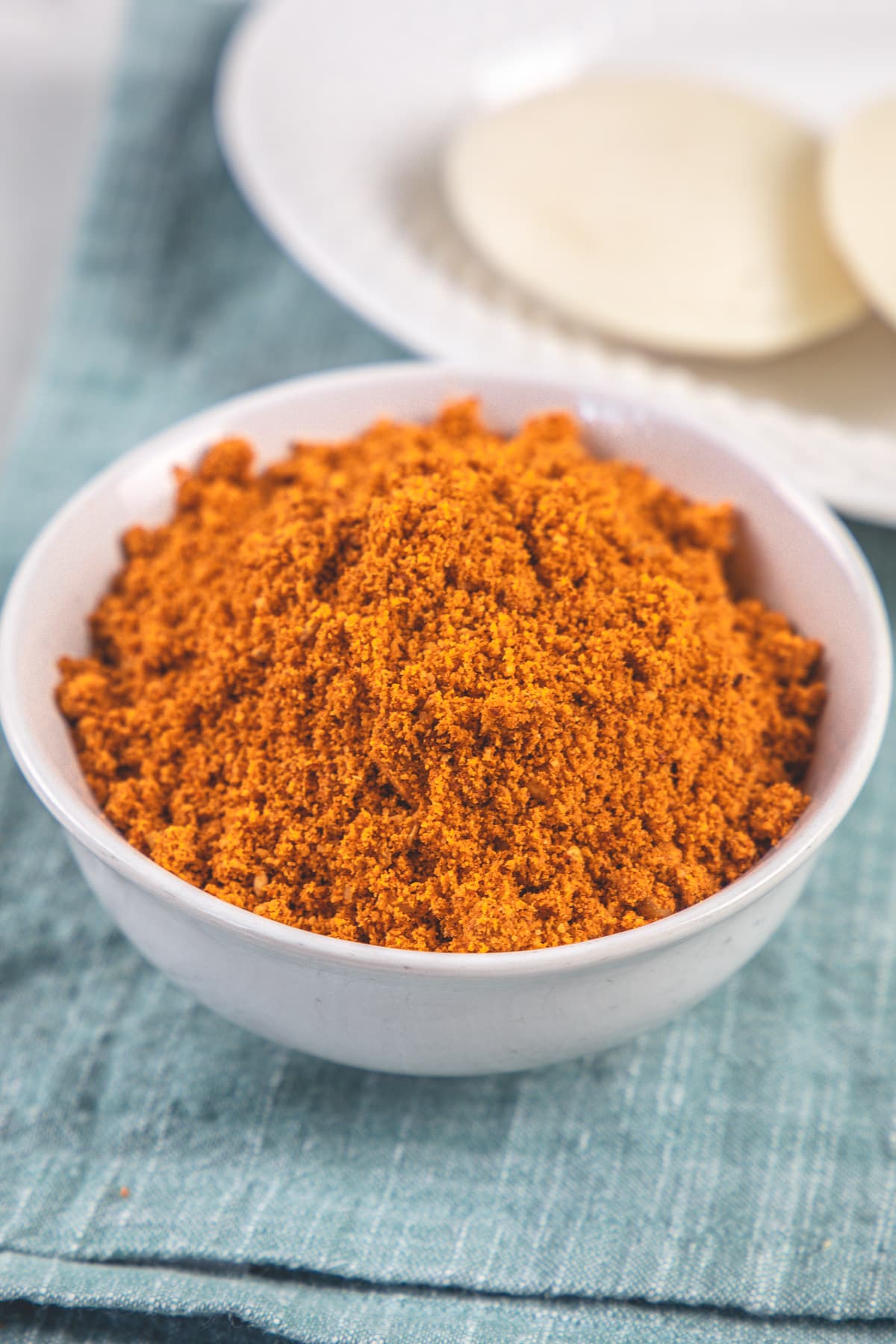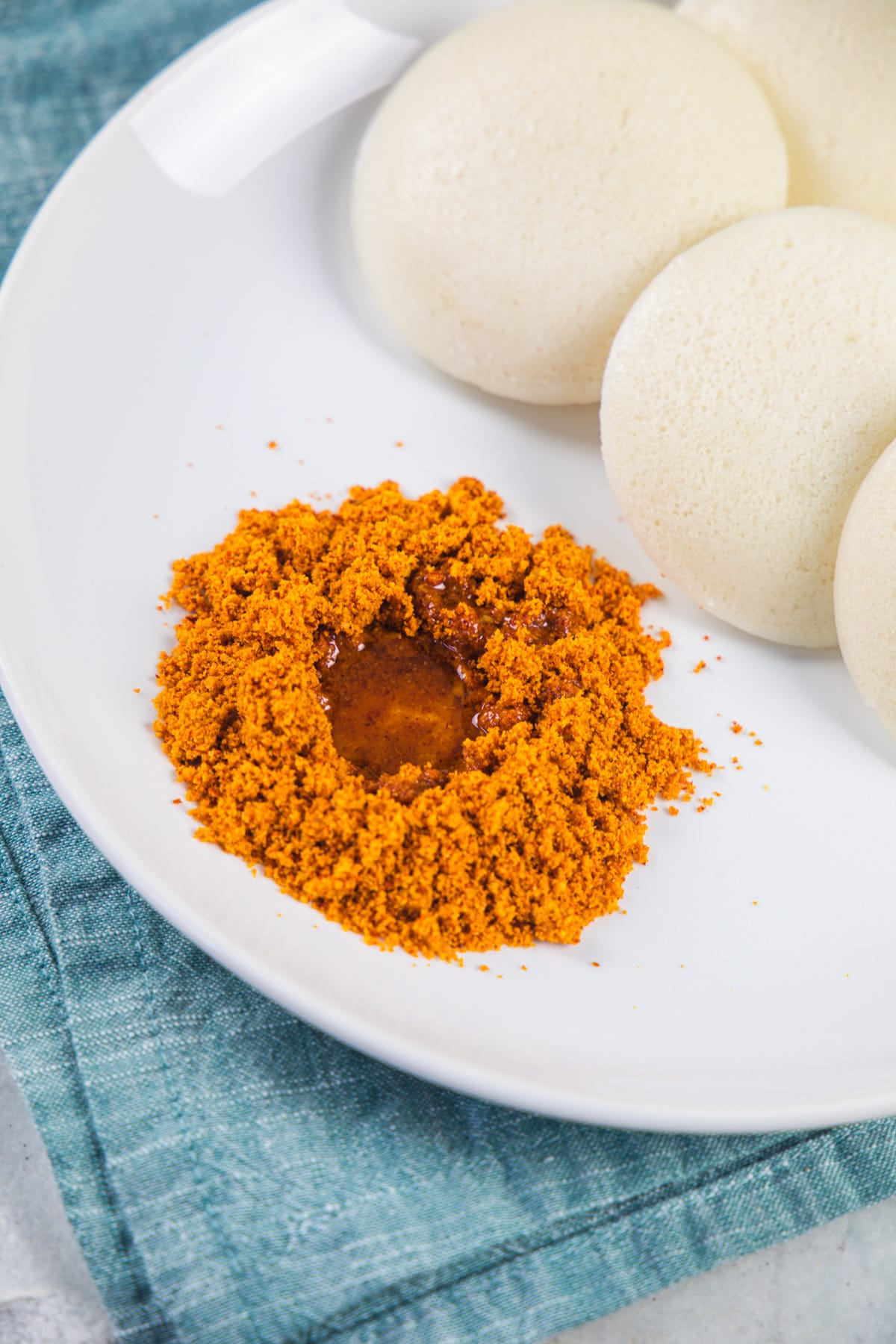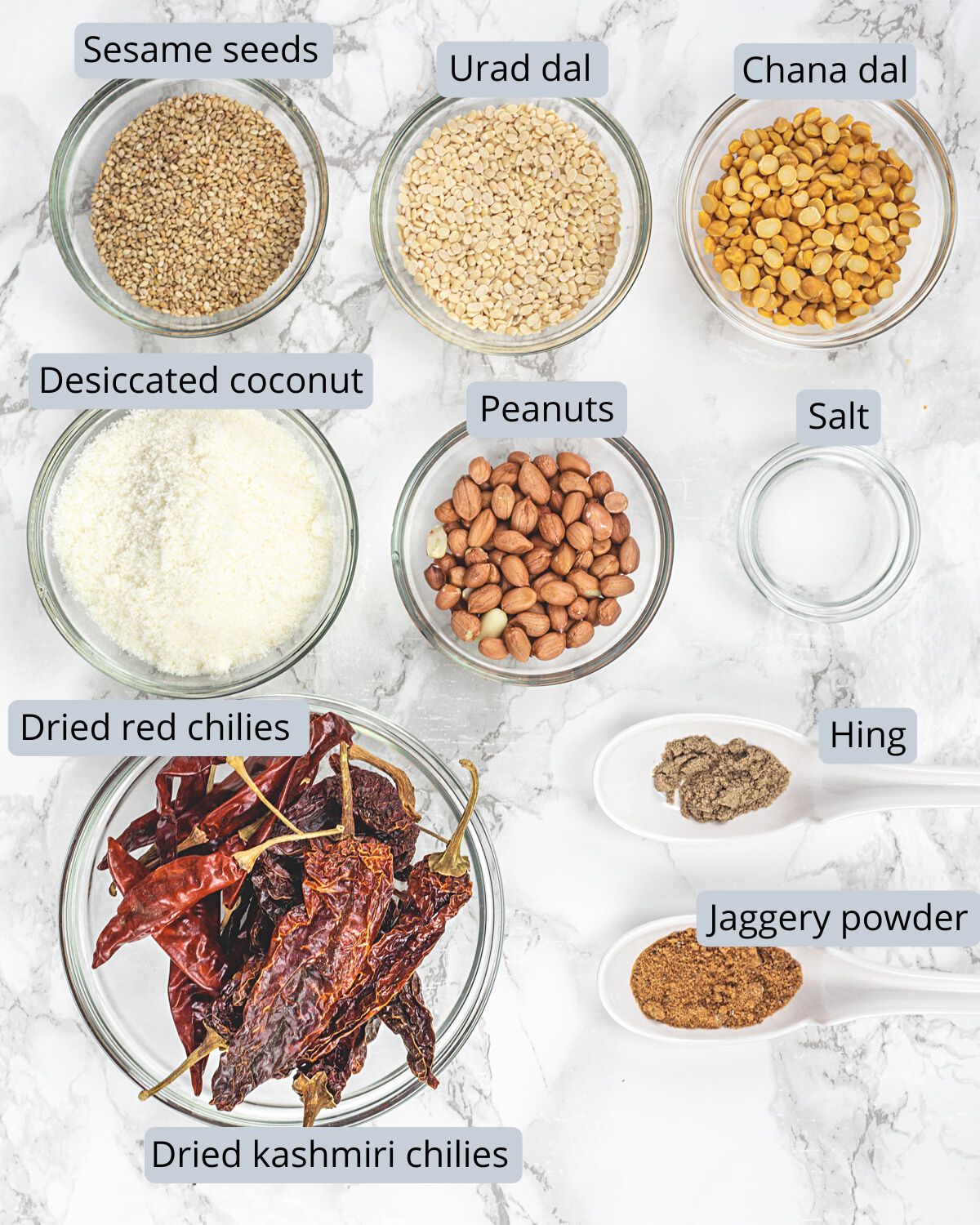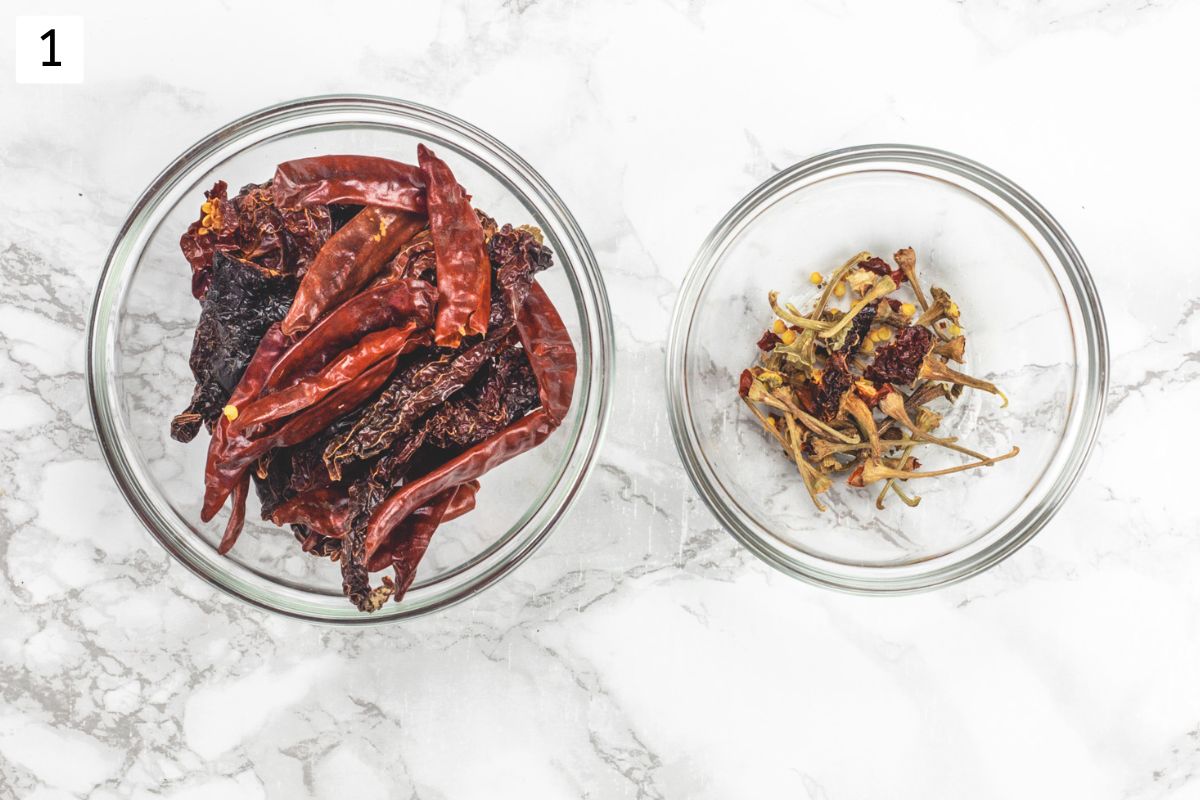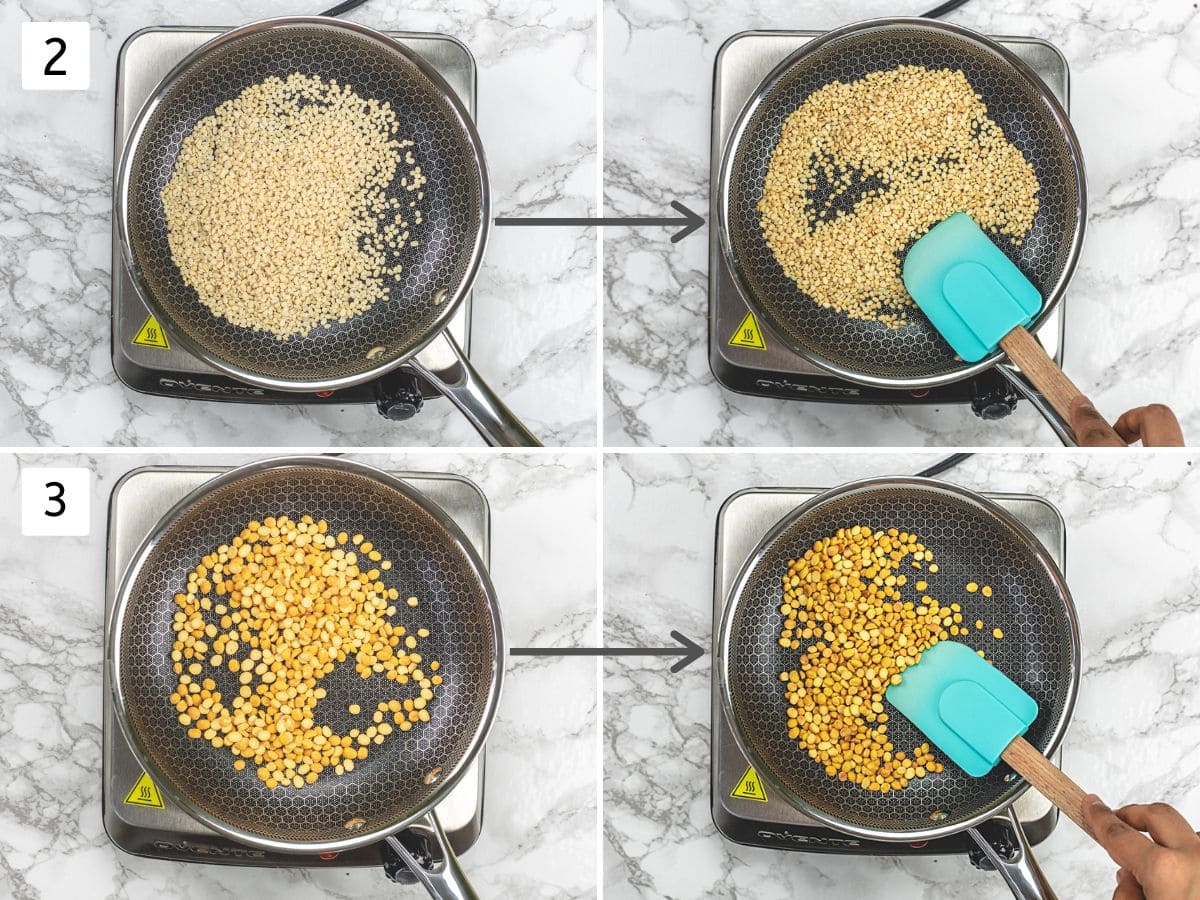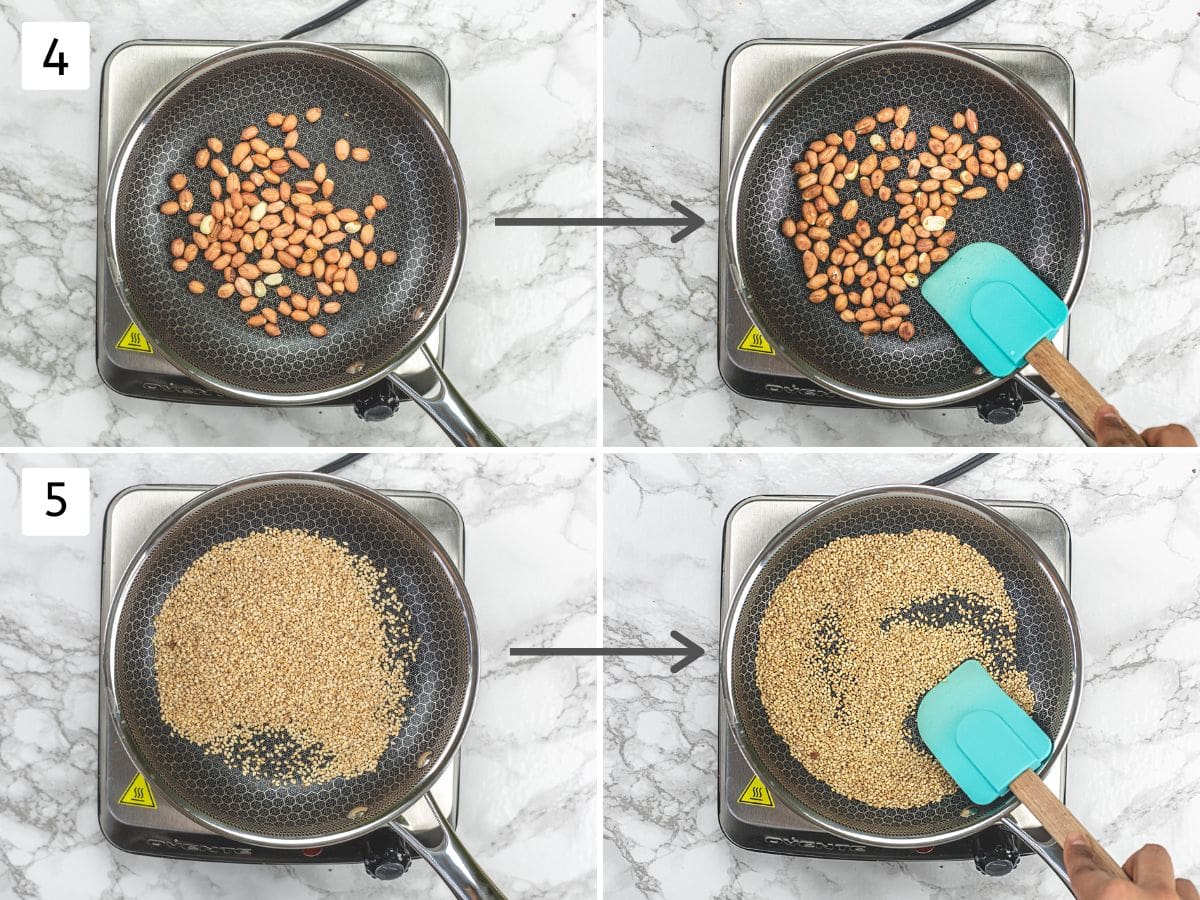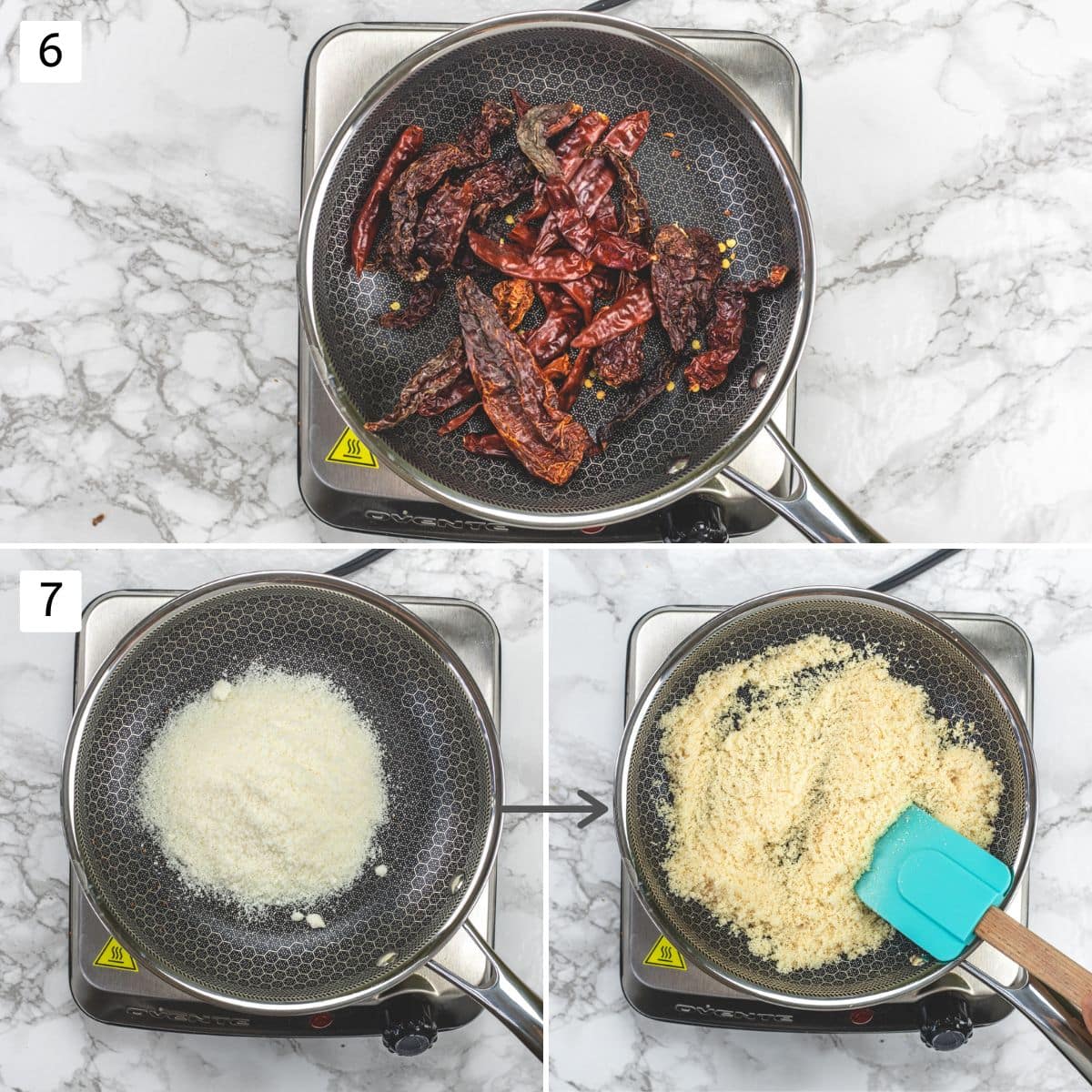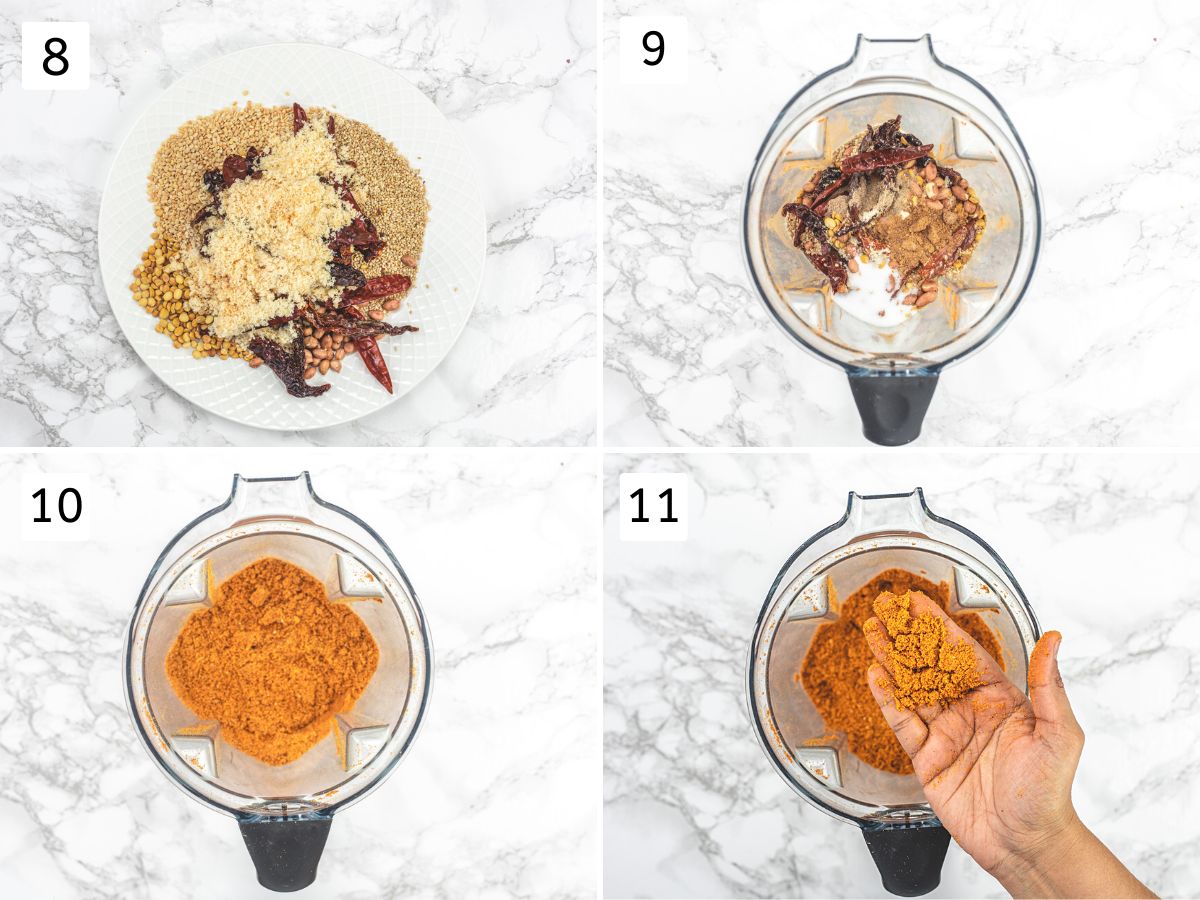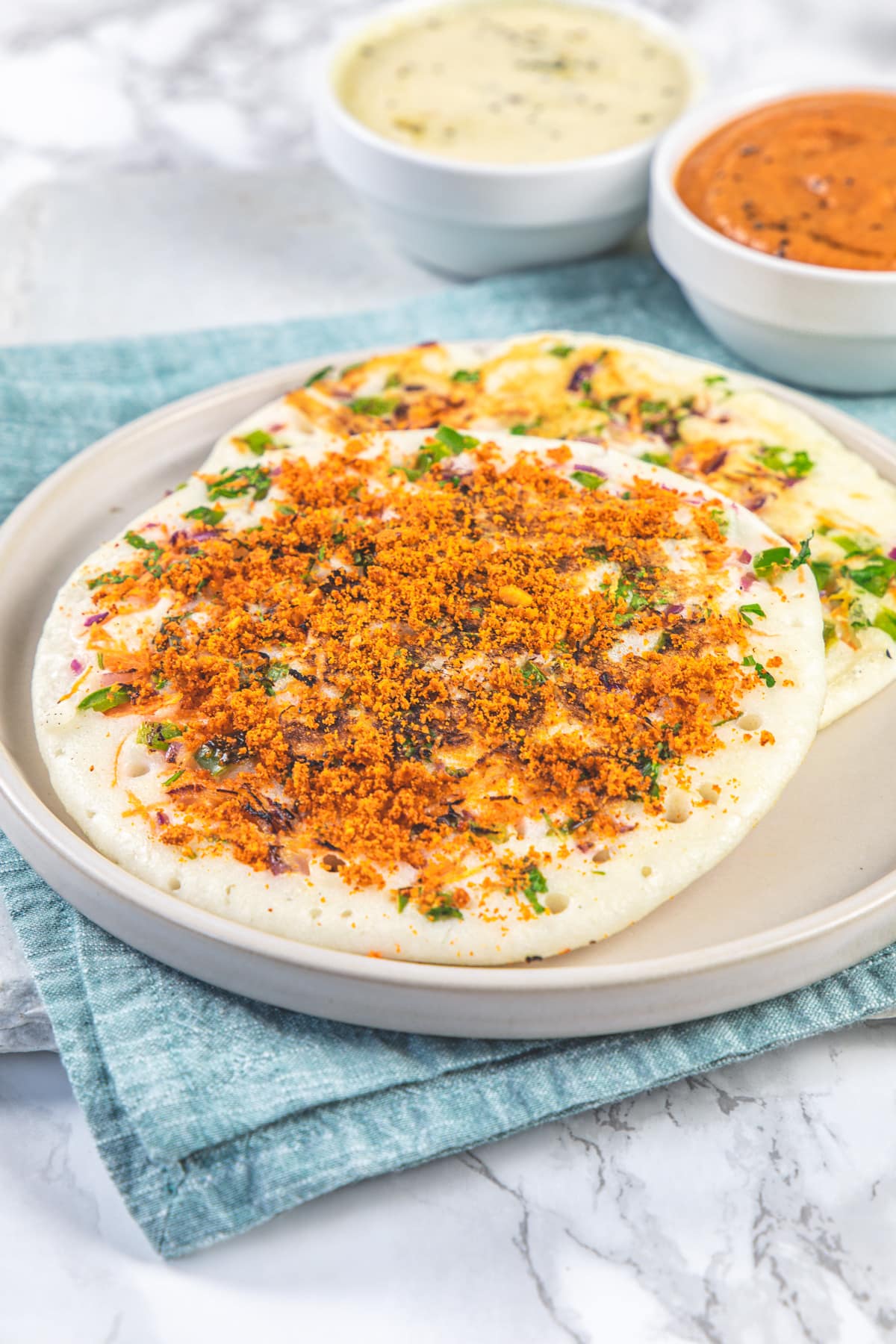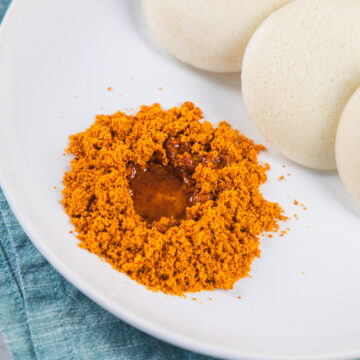What Is Idli Podi?
Idli podi is a coarse spice powder that is made from lentils, nuts, seeds, and dried chilies. Here podi translates to powder and it is most commonly served with a popular South Indian breakfast idli. So the name is idli podi. It is also known as idli milagai podi in the Tamil language. Here milagai means chilies and podi means powder. There are other names based on regions like idli karam podi in Andhra Pradesh, chutney pudi in Karnataka, etc. These all have a slight variation in the recipe. My recipe of idli milagai podi is the super flavorful one and it will perk up your meal and adds a nice zing. A must-try recipe! Traditionally this chutney powder is mixed with sesame oil (gingelly oil) or ghee and hot idlis are coated with this mixture and it makes a quick breakfast.
❤️You’ll Love Idli Milagai Podi Recipe
Make-ahead: I usually make a large batch of it and store it in the freezer in a ziplock bag. Whenever I make South Indian food (once a week), I remove the required amount and serve it with our meal. We like to sprinkle it on the uttapam.
Spicy (adjustable) Nutty (from peanuts, sesame, and coconut) Earthy (from lentils) Slightly smokey flavor The slight crunch from the coarse lentils
🧾Ingredient Notes
Here is a pic of the ingredients you’ll need to make this flavorful idli podi recipe.
Lentils: You’ll need split urad dal and chana dal. Nuts & Seeds: You’ll need peanuts, sesame seeds, and coconut. Dried chilies: I have used a combination of regular dried chilies and Kashmiri chilies to get a medium-spicy taste. Kashmiri chilies are mild in taste but add a deep red color to the chutney powder. While regular chilies add some heat. Some households use Guntur chilies which are super hot and put your tongue on fire. See the tips section for more details on controlling spice level. Hing: It helps in easy digestion. Jaggery powder (or sugar): It balances the flavors but doesn’t make it sweet. Optional Add-ins: Curry leaves, garlic cloves.
👩🍳How To Make Idli Podi? (Step-Wise Pics)
- Remove and discard the stems of the dried chilies. You can discard the seeds if you prefer a mild spicy taste. Optional step: Wipe down the chilies using a damp paper towel. Spread it on the kitchen towel and let it dry out. Or keep in the sun if possible. This step is optional and it depends on how dusty or dirty your chilies are.
- Start roasting all the ingredients one by one on medium-low heat. Take urad dal in a pan and dry roast with stirring constantly until they are light golden brown in color. Make sure not to burn them. Remove it to a plate.
- Similarly, dry roast chana dal until golden brown in color and remove it to the same plate.
- In the same pan add peanuts and roast until they turn golden. Remove it to a plate.
- Next is sesame seeds and roast them until you notice a slight color change and some seeds may start to splutter.
- Next is dry chilies and roast them until they become warm and moisture-free. Make sure not to over-roast or burn them otherwise, you’ll start sneezing.
- Now turn off the stove, the remaining heat is enough to roast the coconut. Add dry coconut and roast with stirring constantly until light golden in color.
- Let everything cool down completely. 9, 10, 11) Transfer to a blender jar, and add salt, hing, and jaggery powder. Grind into powder (slightly coarse here and there but overall it’s a fine powder or podi).
Spice or coffee grinder: Those are small and you’ll have to do it in batches and mix everything well at the end. Vitamix blender: Trust me, it does make a fine powder (you can see in the pic below). You may have to stop in between and push the spices down that are stuck on the sides of the jar. Indian style grinder (Preethi): I have used it in the past and of course, it works perfectly fine.
💭Expert Tips
Use medium-low heat when dry roasting. This will help to prevent them from burning. Stir the spices and lentils constantly while they are roasting. This will help to ensure that they brown evenly. Do not burn the spices and lentils. Burnt spices will have a bitter taste that will ruin the flavor of the idli podi recipe Let the spices cool completely before grinding them. This will help to prevent the powder from becoming clumpy.
🥣 Storage Instructions
Store in a clean, dry (moisture-free), air-tight glass jar or container. I mostly use a mason jar. Store in the refrigerator and it stays good for around 2-3 months. In the freezer, it stays good for around 6 months. I store it in a freezer-safe ziplock bag. As it is in powder form, it doesn’t solidify, so whenever I make idli, uttapam I just remove the required amount using a clean spoon. Then I reseal the ziplock bag and put it back in the freezer.
🍽 How To Serve Idli Podi?
Take a spoonful of idli milagai podi, drizzle some ghee or sesame oil (gingelly oil), and mix. Serve with piping hot idli or simply toss idli pieces into the podi-ghee mixture and coat. Sprinkle a spoonful of podi over the uttapam soon after you remove it from the pan. This can be served with upma, vada, dosa, curd rice, lemon rice, poha upma, etc. to perk up your meal. Mix idli podi and ghee with piping hot rice, it tastes superb.
Did you try this recipe? I’d love to hear about it! Leave a review in the comment section below.
Mild: Use all Kashmiri dried chilies. These have a mild spicy flavor but give a bright red color. Medium spicy: Follow the recipe as mentioned (use the mixture of Kashmiri chilies and regular dried red chilies). Also, discard the seeds of the chilies. Spicy: Use all regular chilies or reduce the number of Kashmiri chilies or skip them. Extremely spicy: Use the spicier version of dried chilies aka Guntur chilies.
Coconut chutney Peanut chutney Sambar recipe Tomato chutney
